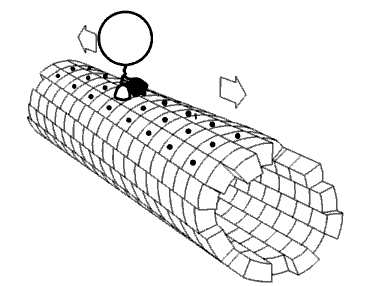
Photo from academic.microsoft.com
Compartmentalisation is a defining feature of biological processes. Within eukaryotic cells, organelles serve as segregated microenvironments for specific biochemical processes. These microenvironments allow distinct chemical environments to be maintained within… Click to show full abstract
Compartmentalisation is a defining feature of biological processes. Within eukaryotic cells, organelles serve as segregated microenvironments for specific biochemical processes. These microenvironments allow distinct chemical environments to be maintained within the cell and concentrate enzymes involved in catalytic cycles in the same space. This concentration of enzymes and substrates within a small segregated environment contributes to the great efficiency of biochemical processes. I aim to investigate the potential of a novel artificial lipid membrane system, the droplet interface bilayer (DIB), as a platform for a spatially segregated compartmentalised nanoreactor. DIB technology serves as a simple method for producing small aqueous compartments bounded by lipid membranes. The incorporation of membrane transport proteins between the aqueous compartments will allow distinct chemical environments to be maintained and for the controlled separation of substrates and products. The nanoreactor design will aim to recreate the segregated microenvironments and enhanced catalytic efficiencies found in biological processes in a synthetic setting.
Journal Title: Biophysical Journal
Year Published: 2017
Link to full text (if available)
Share on Social Media: Sign Up to like & get
recommendations!